For heat-stable crafting containers, you'll want to take into account borosilicate glass (withstands up to 450°C), stainless steel (excellent heat distribution), silicone (flexible and heat-resistant to 300°C), heat-resistant polypropylene (budget-friendly option up to 250°F), and properly lined stainless steel molds (not aluminum, which reacts with lye). Each material offers unique benefits for different crafting techniques, from soap making to candle crafting. Discover which option aligns with your specific crafting needs below.
Borosilicate Glass: The Gold Standard for Hot Process Soap Making
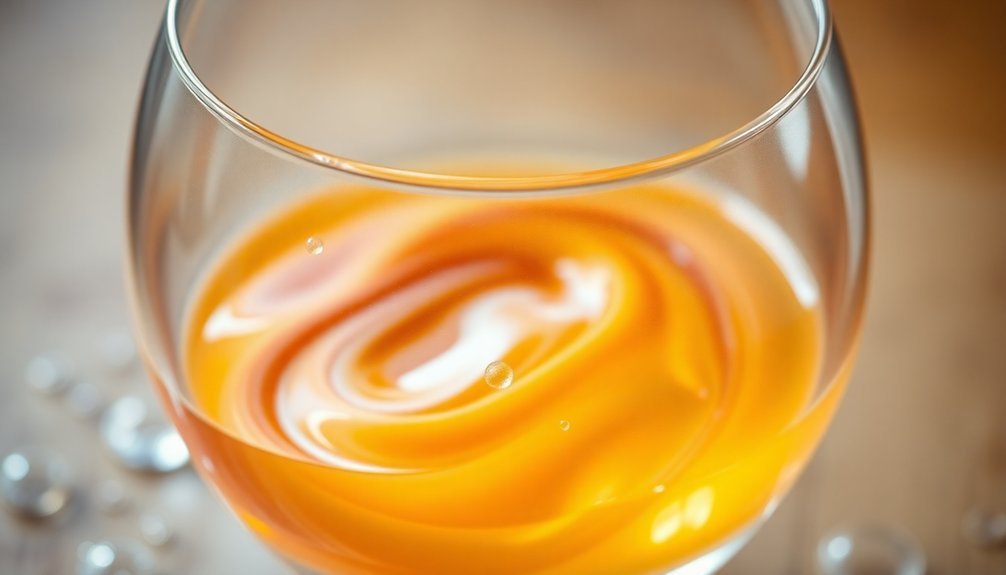
When it comes to hot process soap making, borosilicate glass stands as the undisputed gold standard among container materials.
You'll appreciate its remarkable thermal stability—withstanding temperatures up to 450°C without cracking when exposed to rapid temperature changes.
Its exceptional chemical resistance means you can safely handle caustic soap ingredients without worrying about container deterioration. Unlike ordinary glass, borosilicate won't react with most chemicals, though hydrofluoric acid remains its only weakness.
You'll find the superior optical clarity invaluable for monitoring your soap's texture and color changes without interrupting the process.
The glass's impressive mechanical strength allows for confident handling during intense crafting sessions.
For consistent results in heat-intensive soap making, borosilicate containers offer durability that minimizes replacement needs while ensuring process integrity.
Stainless Steel Vessels: Durability Meets Even Heat Distribution
Stainless steel vessels represent perhaps the most versatile option for crafting containers, offering an impressive balance of durability and heat performance. Composed of iron, carbon, and at least 10.5% chromium, these non-reactive containers are ideal for crafting acidic or alkaline materials without contamination concerns.
You'll find stainless steel particularly valuable for soap making, wax melting, and food preparation due to its resistance to corrosion and scratches.
While it has lower thermal conductivity than copper or aluminum, many stainless steel containers incorporate aluminum cores (triply construction) to enhance heat distribution.
Unlike cast iron or copper alternatives, stainless steel won't react with your crafting materials and requires minimal maintenance.
For best results, preheat your vessel gradually to prevent hotspots and avoid abrasive cleaners that might damage its sleek surface.
Silicone Containers: Flexible Solutions for Cold and Hot Process Methods
Flexibility defines silicone containers, making them revolutionary options for both cold and hot process crafting methods.
You'll appreciate their impressive heat resistance up to 300°C while remaining workable at temperatures as low as -55°C.
What sets silicone apart is its remarkable versatility. You can mold it into custom shapes without sacrificing strength or integrity. It won't react with your ingredients, preserving flavors and preventing contamination.
You'll find silicone containers particularly valuable for their longevity—they resist staining, withstand dishwasher cleaning, and don't degrade under UV exposure. Their non-stick properties make them practical for daily use.
Made from non-toxic silica, silicone containers offer an environmentally friendlier alternative to plastic while providing comparable flexibility at competitive prices.
Heat-Resistant Polypropylene: Budget-Friendly Options for Beginners
Polypropylene containers offer beginners an affordable entry point into the world of crafting, while still providing impressive heat resistance.
These versatile containers can withstand temperatures up to 250°F without special linings, making them suitable for numerous craft applications.
Polypropylene's impressive 250°F heat threshold opens endless creative possibilities without requiring expensive specialty coatings.
You'll appreciate their chemical stability when working with acids, alkalis, or detergents in your projects.
The non-toxic nature of polypropylene guarantees safety, as it doesn't release harmful substances when heated.
Plus, its transparency allows you to monitor your creations throughout the process.
For craft storage, polypropylene's moisture and mold resistance keeps your supplies protected.
When you're ready to clean up, these containers are dishwasher-safe for easy maintenance.
If you're just starting out, you won't find a more cost-effective option that balances durability with heat performance.
Aluminum Soap Molds: Rapid Cooling for Traditional Soap Curing
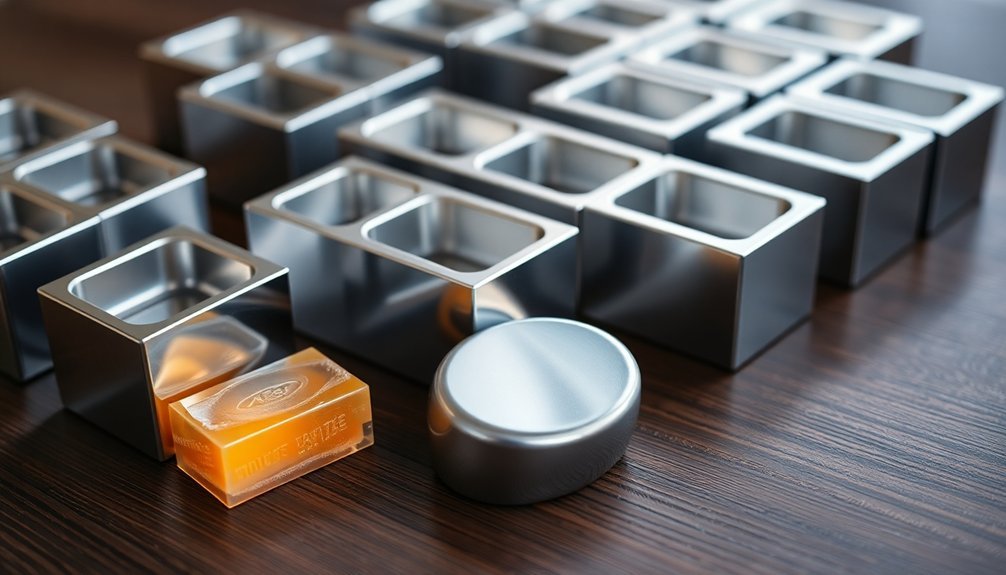
Despite its popularity in other crafting applications, aluminum is actually a poor choice for soap molds due to its problematic chemical reactivity. When exposed to sodium hydroxide (lye) in soap-making processes, aluminum reacts and releases harmful gases while potentially ruining your soap batch.
Unlike what the subtitle suggests, rapid cooling isn't beneficial or relevant to soap curing. Traditional soap making requires controlled temperature conditions, not quick cooling. The association between aluminum and rapid cooling relates to metalworking techniques like quenching, which has no application in soap crafting.
Instead, choose safer alternatives such as silicone, wood, or lined glass molds. For high-temperature applications up to 560°F / 294°C, Mold Max® 60 would be a better option than aluminum.
If you need a metal option, only stainless steel offers the chemical inertness necessary for successful soap making, though you'll still need to line it to prevent sticking.
Frequently Asked Questions
Can I Reuse Containers That Have Developed Scratches or Discoloration?
You can reuse scratched containers if they're sanitized and structurally sound. For discolored ones, verify there's no chemical damage. Always inspect thoroughly and consider replacing containers with deep scratches that might harbor bacteria.
How Do Different Materials Affect Soap Scent Retention?
Materials affect your soap's scent retention primarily by controlling storage conditions. Glass and stainless steel protect against heat and light, which can degrade fragrances. Airtight containers also prevent scent evaporation during storage.
Which Materials Are Best for Creating Detailed Soap Designs?
Silicone molds are your best choice for detailed soap designs. They're flexible, release soap easily without prepping, and capture intricate patterns perfectly. For swirling techniques, you'll also want dividers and combs.
Do Certain Materials Require Special Release Agents?
Yes, you'll need special release agents for many materials. Silicone naturally releases well, while glass and ceramic often require oil or commercial sprays. Metal containers definitely need release agents to prevent sticking.
How Does Altitude Affect Curing Times in Different Container Materials?
Altitude affects your curing times differently: concrete cures faster but may dry out prematurely, polymers react slower in cooler temperatures, glass isn't greatly affected, and metals conduct heat differently requiring adjusted curing schedules.
In Summary
Whether you're a beginner or experienced soap maker, choosing the right heat-stable container makes all the difference. You'll find borosilicate glass and stainless steel perfect for high temperatures, while silicone offers flexibility for various methods. If you're budget-conscious, heat-resistant polypropylene won't break the bank. For faster curing, aluminum molds can't be beat. Select the material that best suits your specific soap making process and needs.
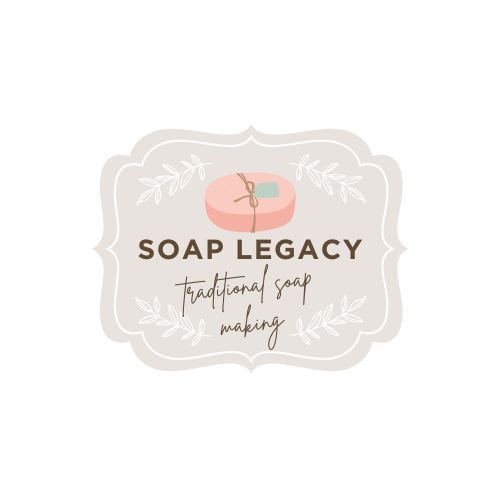
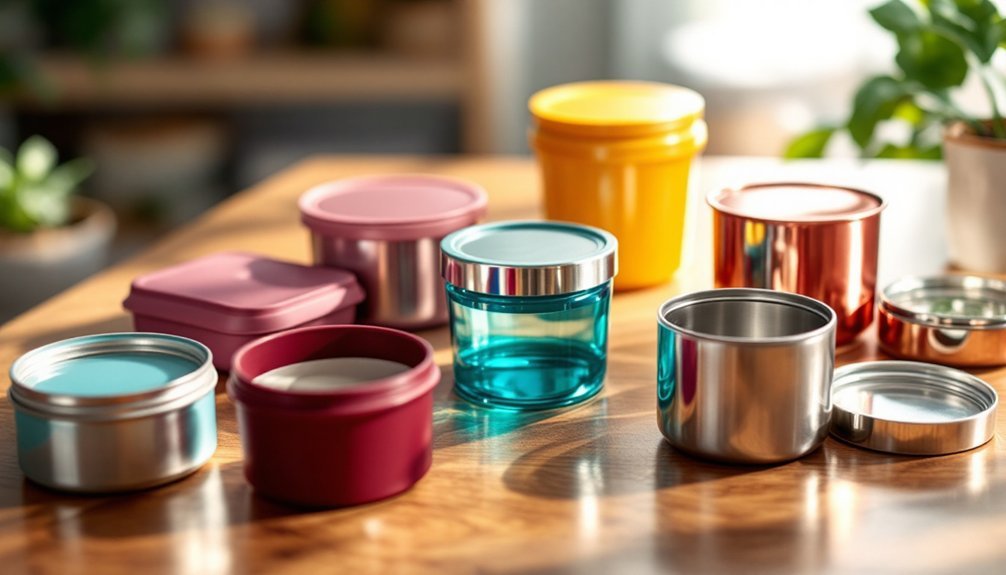
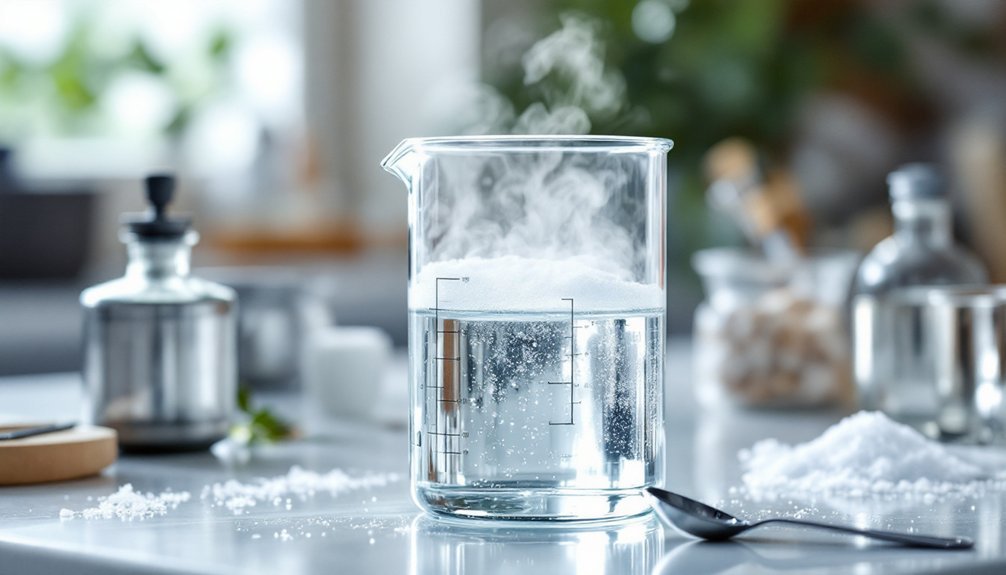
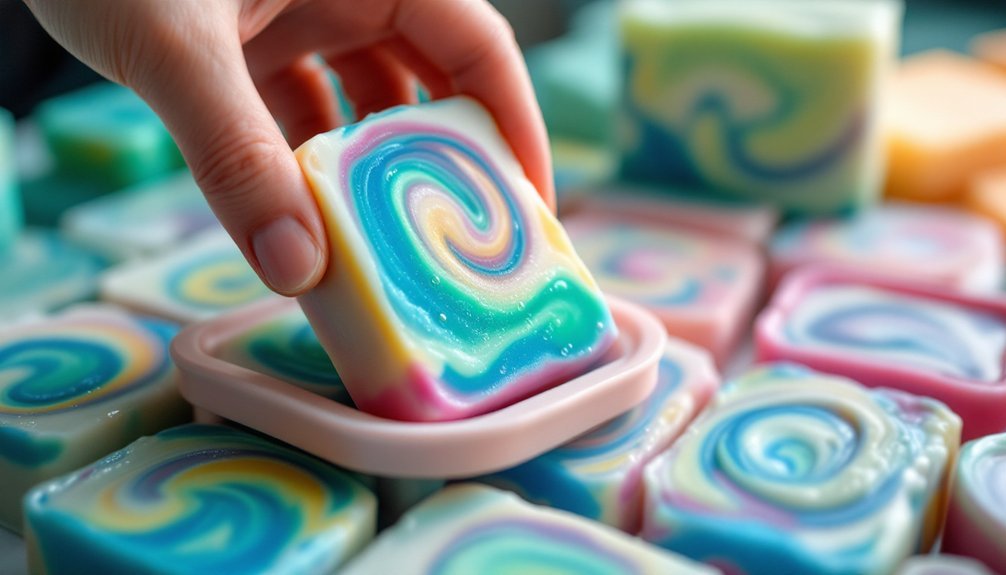
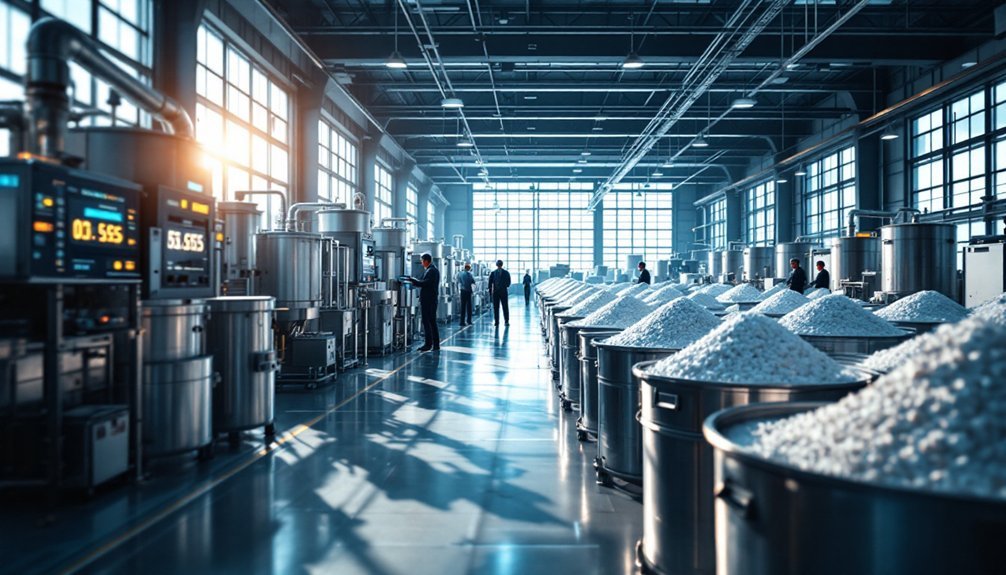
Leave a Reply